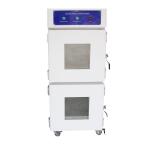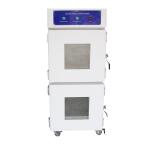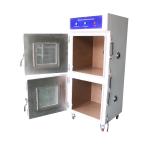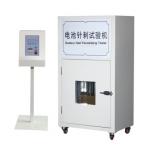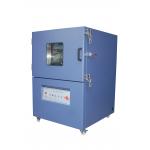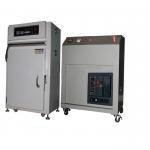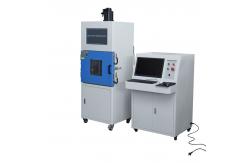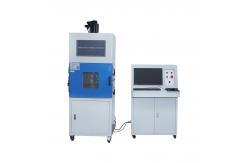In the realm of battery testing, the Battery Extrusion Needle Test
Machine has emerged as a crucial instrument. This specialized
device is designed to subject batteries to a unique form of stress
testing, thereby revealing potential weaknesses and safety hazards
that might otherwise go unnoticed. The Battery Extrusion Needle Test Machine is a dedicated piece of
equipment used by battery manufacturers, research institutions, and
quality control laboratories. Its primary purpose is to evaluate
the integrity and safety of batteries by simulating the effects of
external mechanical forces. By applying a controlled extrusion
force using a needle, it mimics real-world scenarios where a
battery might be subjected to pressure, such as during mishandling,
crushing, or being in a confined space. This allows for a
comprehensive assessment of the battery's ability to withstand such
stresses without compromising its structural integrity or
triggering hazardous events like short circuits, thermal runaway,
or leakage. - Robust and Adjustable Frame
- The machine is constructed with a heavy-duty frame, typically made
of high-strength steel, to ensure stability and durability during
the testing process. The frame is designed to accommodate different
battery sizes and shapes, with adjustable fixtures and clamps. This
flexibility enables the testing of a wide range of battery
chemistries and form factors, from small coin-cell batteries to
large-format lithium-ion packs used in electric vehicles and energy
storage systems. The adjustable components are precisely
calibrated, allowing for quick and accurate setup, minimizing the
time required between different test runs.
- Precision Extrusion Needle Mechanism
- The extrusion needle is a critical component of the machine. It is
made of a hardened and corrosion-resistant material, such as
stainless steel or tungsten carbide, to ensure it can withstand the
forces exerted during testing without deforming or breaking. The
needle's diameter and length can be adjusted according to the
specific requirements of the battery being tested. The machine is
equipped with a highly accurate force control system that can apply
a consistent and precisely measured extrusion force. This force can
range from a few Newtons for small, delicate batteries to several
hundred Newtons for larger, more robust ones. The control system
allows for fine-tuning of the force application rate, enabling the
simulation of different impact scenarios, from slow, gradual
compression to rapid, sudden jolts.
- Advanced Sensing and Monitoring Capabilities
- To comprehensively assess the battery's response to the extrusion
test, the machine is outfitted with a suite of sensors. Voltage and
current sensors are installed to monitor any electrical changes
within the battery during the test. A sudden increase in current or
a drop in voltage could indicate the onset of a short circuit or
internal damage. Temperature sensors are strategically placed on
the battery's surface and, in some cases, within the cell to
measure any temperature fluctuations. An abnormal temperature rise
might suggest a potential thermal runaway. Pressure sensors are
also incorporated to measure the internal pressure of the battery,
providing valuable insights into its structural integrity and the
likelihood of leakage or rupture. These sensors are connected to a
state-of-the-art data acquisition system that records and analyzes
the data in real-time. The data acquisition system is highly
configurable, allowing users to set custom sampling rates and
trigger thresholds. It can also generate detailed reports and
graphs, facilitating in-depth analysis and comparison of different
test results.
- Enhanced Safety Features
|
